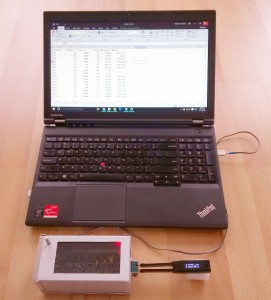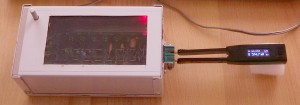// April 1st, 2016 // No Comments » // Distributors, LCR-Reader, LCR-Reader Store, News, ST-5S

Calibration Jig for Smart Tweezers and LCR-Reader
Siborg has been working over the past year with the Institute of Automation and Electrometry at the Russian Academy of Sciences in creating a Calibration Fixture that will allow periodic calibration of all models of Smart Tweezers, and, most importantly, the LCR-Reader. The calibration fixture was then sent to Navair Technologies in Toronto, Canada to be verified. With this verification from Navair, Siborg will soon be able to include calibration certificates with LCR-Reader, which was a main hindrance in companies using the device.
The calibration unit utilizes a 4-wire connection which has been found to reduce noise between connections and the PCB within the calibration fixture.
Previous calibration fixtures used a 2-wire connector which worked well for older models of Smart Tweezers, including the ST-1, ST-2 and ST-3. The 2-wire connector was not able to handle the measurements within the LCR-Reader and Smart Tweezers measurement ranges. Due to parasitics, it could not measure lower values of capacitance and inductance and higher values of resistance. Therefore, the 2-wire calibration fixture was only able to measure mid-range values.
The calibration fixture uses 14 known components that lay within the range of measurements. When a device is connected, the fixture will signal a different component with each button push. The measurement values are instantly displayed on the LCR-Reader or Smart Tweezers’ display which can then be compared to the known values of the components to determine accuracy.
“The new fixture makes it much easier to provide periodic traceable calibration now that it has been certified by Navair Technologies. We have now completed two versions of the calibration fixture using both 4-wire and 2-wire connections. The 4-wire is best suited for newer models, including the recent LCR-Reader. The 2-wire is best for the older models, including the ST-1, ST-2, ST-3 and STIC. These older models used a 2-wire connec tion in the handles of the device and could not be properly tested with the 4-wire terminal. This new calibration unit will allow all models to be tested and calibrated.” says the Director of Research and Development at Siborg, Michael Obrecht.
tion in the handles of the device and could not be properly tested with the 4-wire terminal. This new calibration unit will allow all models to be tested and calibrated.” says the Director of Research and Development at Siborg, Michael Obrecht.
Soon, the calibration certificates will be available in the LCR-Reader Store; there will be 2 types to choose from: a basic calibration certificate that ensures the device has been calibrated, or a more detailed format that shows the measurement results compared to the known values.
 Siborg has begun offering the Smart Tweezers Offset Calibration Board in the LCR-Reader Store.
Siborg has begun offering the Smart Tweezers Offset Calibration Board in the LCR-Reader Store.

 tion in the handles of the device and could not be properly tested with the 4-wire terminal. This new calibration unit will allow all models to be tested and calibrated.” says the Director of Research and Development at Siborg, Michael Obrecht.
tion in the handles of the device and could not be properly tested with the 4-wire terminal. This new calibration unit will allow all models to be tested and calibrated.” says the Director of Research and Development at Siborg, Michael Obrecht.